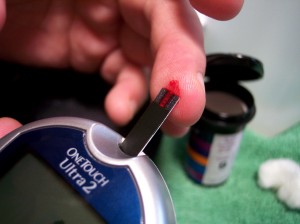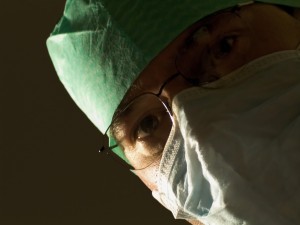 Another post that I’m resurrecting because its link disappeared as I transitioned to my self-hosted site!
Another post that I’m resurrecting because its link disappeared as I transitioned to my self-hosted site!
Listeriosis
Last year we experienced the biggest food-borne outbreak of listeriosis in this country in over 20 years. At least 30 people across 12 states had died as a result of eating tainted cantaloupes that were linked to one Colorado farm. And at least 146 people in total suffered illness in this outbreak.
The causative bacterial organism, Listeria monocytogenes, is a common cause of US food recalls in foods such as deli meats, hot dogs and soft cheeses made with unpasteurized milk. Its emergence as a contaminant in fresh foods like this, however, is a new and concerning event.
One problem associated with listeriosis is that it can take weeks, and up to two months in some cases, for symptoms to develop post-infection. This is very different to the quick onset of symptoms that occurs in cases of food-borne illness due to salmonella and E. coli infections.
Listeria is a very common organism in general, and it can also proliferate to high levels in low temperatures, rather than becoming dormant. This combination of facts means that it can potentially be introduced onto food at any point in the food chain – whether out in the field, in your home, or somewhere in between. Serious disease due to listeriosis is, however, uncommon. In order to cause serious illness the bacterium needs to get onto food and proliferate to levels high enough to cause disease – it’s been reported that people need to ingest over one million organisms to become sick.
l
Symptoms?
Symptoms are generally non-specific. Flu-like complaints such as headache, muscle aches and fever, not too uncommon this time of year, can occur. Additionally, abdominal cramps and diarrhea commonly occur. Certainly the development of diarrhea and abdominal pain should prompt you to visit your doctor, especially if you have eaten cantaloupe in recent weeks. In particular, older people, newborns, pregnant women, and people with weakened immune systems are at a higher risk of listeriosis.
c
What To Do With Your Cantaloupe
The outbreak has only been linked to a single location, Jensen Farms, in Colorado. If you are unclear as to the origin of that cantaloupe in your kitchen, you are advised to throw it away. And don’t assume that if it’s been sitting in the fridge, that it’s ok – remember it tends to multiply in cold temperatures. So the longer a tainted cantaloupe is in the fridge, the higher your risk of developing listeriosis. Some people advise washing the cantaloupe to reduce the contamination risk, but inevitably this won’t sterilize the fruit, so the general advice from the CDC is: “If in doubt, throw it out”.
c
Some general guidelines offered by the CDC to help avoid listeriosis:
1) Rinse fruit and vegetables thoroughly before eating
2) Thoroughly cook raw meat and poultry
3) Cook hot dogs, deli meats, & cold cuts until steaming hot before serving
4) Avoid unpasteurized milk or cheeses containing unpasteurized milk
5) Keep your fridge at or below 40F, and your freezer at or below 0F
f
Image credit mconnors @morgueFile










Follow Me!